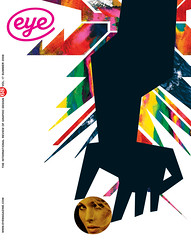Summer 2008
Kurnal Rawat
Who cares about graphic design history?
Kurnal Rawat comes from Mumbai, where he graduated from the Sir. J. J. Institute of Applied Arts in 1977.
Q1. What do you think is meant by ‘the canon of graphic design history’?
A1. I think of important milestones that have redefined the principles of graphic design. These works or people are like subconscious mentors working at the back of your head. True designs cannot be ignored or challenged, only accepted, adored and learned from. They are like the scientists of visual language, inventing new ways to look at simple things in a different light.
Q2. Does this kind of design history have relevance to what you do in your design practice?
A2. Definitely. These works may not be necessarily relevant for your own project now, but an understanding of when they were done, in what circumstances and with what mindset is of utmost importance for the designer’s learning process. They are revolutionary steps for the future of design industry.
Q3. Where did you learn about design history?
A3. We never had design history in our institute, just history of art (European and Indian), and if I am not mistaken it is still the same in art schools here. Design history books would be of great help, not just for the students but for the faculty, too. My learning was more of a self-initiative. The college library helped a bit, as did asking friends and relatives to get books on their travels abroad.
Q4. Does history have any relevance to the new technology and techniques you’ve had to master in your work?
A4. Evolution of technology and techniques is a never-ending phenomenon, but experience is something that can only be shared. And documentation of this history is a step towards making that idea flourish and be passed on. It’s like they say in art school: ‘Unless you’ve got your anatomy right you won’t have the knowledge to distort it.’
Q5. If you were in charge of a design education programme, what aspects of design history (if any) would you teach to your students?
A5. Methodical design history, cultural design history, experimental design history, and the medium of design.
First published in Eye no. 68 vol. 17 2008
Eye is the world’s most beautiful and collectable graphic design journal, published quarterly for professional designers, students and anyone interested in critical, informed writing about graphic design and visual culture. It is available from all good design bookshops and online at the Eye shop, where you can buy subscriptions and single issues.

